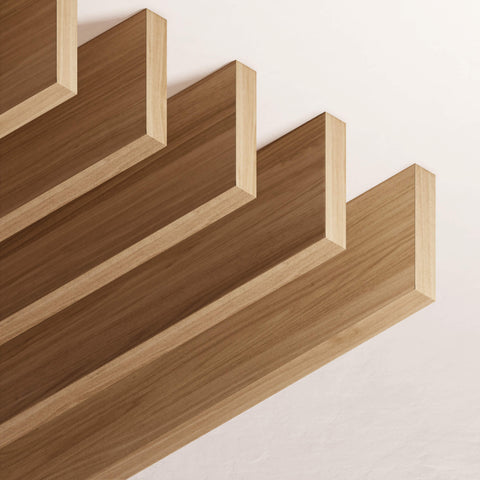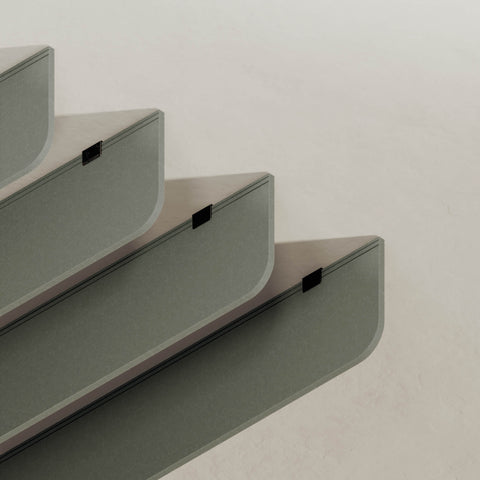For individuals with hearing difficulties, home environments can either support or hinder communication and inclusion. Modern interior design trends, background noise, and poor acoustics often create unnecessary challenges for those with hearing loss.
Creating a hearing-loss-friendly home isn’t just about accessibility - it’s about fostering comfort, connection, and ease of communication for everyone in the household. By making thoughtful adjustments to acoustics, furniture placement, and noise control, families can transform their homes into more inclusive spaces.
One effective and stylish solution is dbsorb’s DIY-friendly acoustic panels, which help reduce sound reverberation and improve clarity. This guide explores how to optimise home acoustics for individuals with hearing loss while maintaining an elegant and cozy living space.
The Problem with Minimalist Design Trends
Modern interior design prioritises aesthetics, but what looks good doesn’t always sound good - especially for those with hearing difficulties.
Minimalist home trends often include:
-
Open floor plans that amplify noise.
-
Hard surfaces like hardwood floors, glass, and metal, which reflect sound instead of absorbing it.
-
Large, drapery-free windows that allow sound to bounce freely.
-
Sparse furnishings that create echoes and make conversations harder to follow.
These elements increase sound reverberation, making speech less clear and more difficult to process. For those with hearing loss, this can lead to miscommunication, frustration, and social isolation.
Addressing these acoustic challenges doesn’t mean compromising on style - it simply requires smart solutions like dbsorb acoustic panels, rugs, and thoughtful furniture placement.
Understanding the Impact of Acoustics on Hearing
Acoustics affect how we hear, process, and understand sounds in our environment. Poor home acoustics can make communication exhausting, especially for individuals with hearing loss or those who use hearing aids.
Key Acoustic Challenges in Homes:
-
Sound Reverberation: When sound waves bounce off hard surfaces, they create echoes that distort speech.
-
Background Noise: HVAC systems, kitchen appliances, and even running water can mask important sounds.
-
Poor Speech Clarity: In rooms with bad acoustics, voices become muffled or difficult to distinguish from background sounds.
Improving home acoustics reduces listening fatigue, enhances clarity, and creates a more comfortable space for everyone.
The Social and Emotional Benefits of Better Home Acoustics
A hearing-friendly home does more than improve sound quality—it fosters inclusion, reduces stress, and strengthens relationships.
How Better Acoustics Benefit Everyone:
✔️ Increased Inclusion – Clearer conversations help those with hearing loss feel more engaged in family activities.
✔️ Less Strain on Caregivers – Caregivers and family members don’t have to repeat themselves constantly or raise their voices.
✔️ More Enjoyable Gatherings – Friends and family can communicate effortlessly, leading to more meaningful interactions.
✔️ Reduced Anxiety and Frustration – A well-designed acoustic environment removes barriers that make socialising stressful.
Investing in sound-friendly solutions makes daily life more enjoyable - not just for those with hearing loss, but for everyone in the home.

The Role of Acoustic Panels in Enhancing Communication
One of the most effective ways to reduce noise and improve communication is strategic placement of acoustic panels.
How dbsorb Acoustic Panels Help:
-
Absorb excess sound waves, reducing echoes.
-
Lower background noise, making speech clearer.
-
Minimise reverberation, improving focus and comprehension.
Best Places to Install Acoustic Panels:
✅ Behind dining chairs – Improves communication during meals.
✅ Behind favorite seating areas – Reduces distractions in living spaces.
✅ In conversation hubs – Creates a space dedicated to meaningful interactions.
Unlike traditional soundproofing materials, dbsorb panels blend seamlessly into home decor - enhancing both aesthetic and function.
Stylish & Functional: Merging Acoustic Panels with Home Decor
Many homeowners worry that acoustic solutions might look bulky or unattractive, but dbsorb panels offer a stylish alternative.
Why They’re a Game-Changer:
✔️ Modern Aesthetic – Available in various colours and groove designs to match any home.
✔️ Enhances Coziness – Adds warmth to open spaces without compromising style.
✔️ Customisable Layouts – Can be arranged creatively for both function and design appeal.

Additional Ways to Improve Home Acoustics:
-
Soft furnishings like area rugs, curtains, and upholstered furniture absorb excess sound.
-
Lower background noise by placing loud appliances in isolated areas.
Combining these strategies with dbsorb acoustic panels creates a hearing-friendly home that’s both beautiful and practical.
Creating a Dedicated Listening Area
Designating a specific “listening zone” in your home can dramatically improve communication for individuals with hearing loss.
Key Features of an Effective Listening Area:
-
Face-to-face seating arrangements to encourage eye contact.
-
Minimal background noise for better focus.
-
Comfortable, inviting space that encourages conversation.
By placing acoustic panels strategically behind seating areas, you enhance clarity and create an environment where family discussions can flourish.
A Healthier Alternative: The Benefits of Glue-Free Mounting
Traditional acoustic panels often require strong adhesives that release toxic VOCs (volatile organic compounds) - harming indoor air quality.
Why dbsorb’s Glue-Free Mounting System is Superior:
✅ No harmful chemicals – Safer for families and pets.
✅ No permanent wall damage – Panels can be repositioned or removed anytime.
✅ Easy DIY installation – No special tools or expertise required.
Learn more about DIY installations >
This innovative approach ensures that acoustic improvements don’t come at the cost of health or home integrity.
Final Tips for a Hearing-Friendly Home
Transforming your home into a hearing-loss-friendly space doesn’t require a complete redesign - just a few thoughtful changes.
Simple Ways to Improve Home Acoustics:
✔️ Use dbsorb acoustic panels in key areas to reduce reverberation.
✔️ Choose soft furnishings that naturally absorb sound.
✔️ Minimise background noise from appliances, HVAC systems, and open spaces.
✔️ Arrange furniture to enhance face-to-face communication.
By prioritising acoustic comfort, you enhance communication, boost inclusion, and create a home that feels welcoming for everyone.















